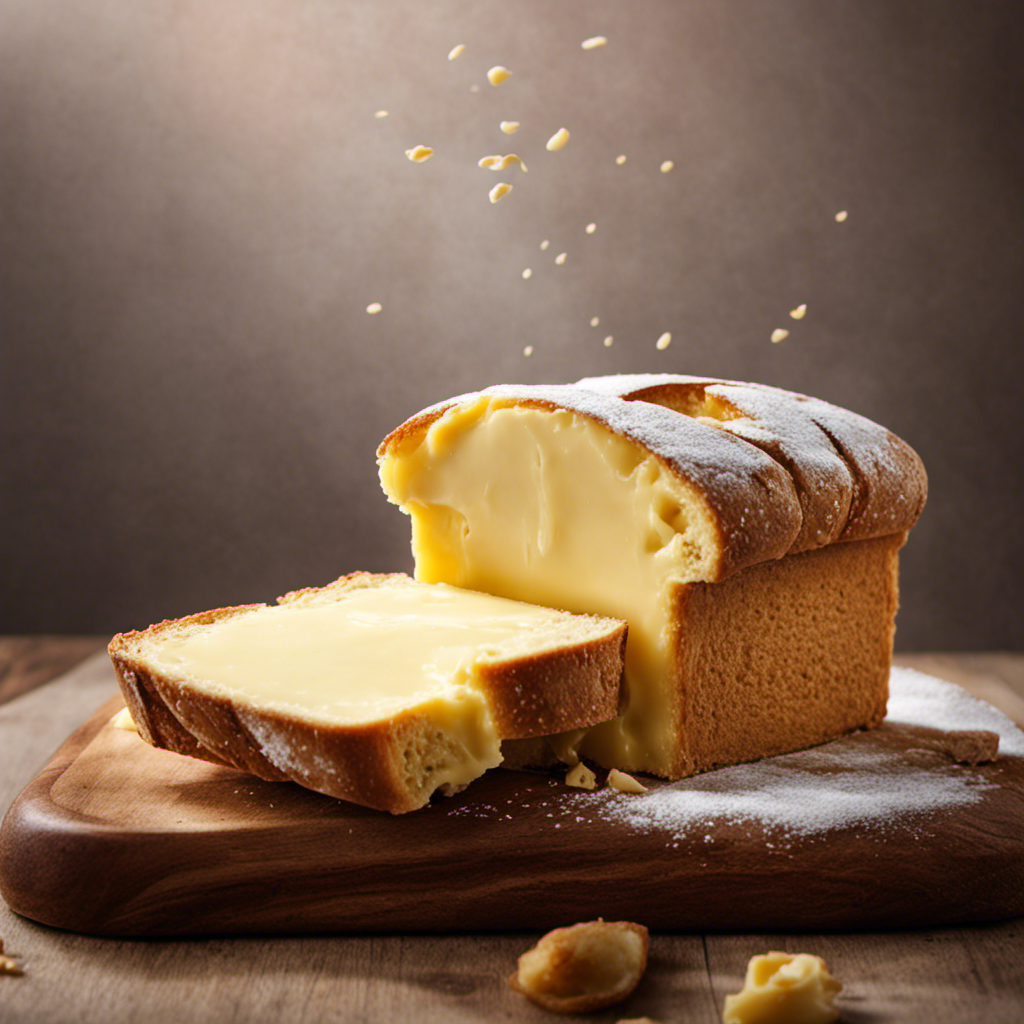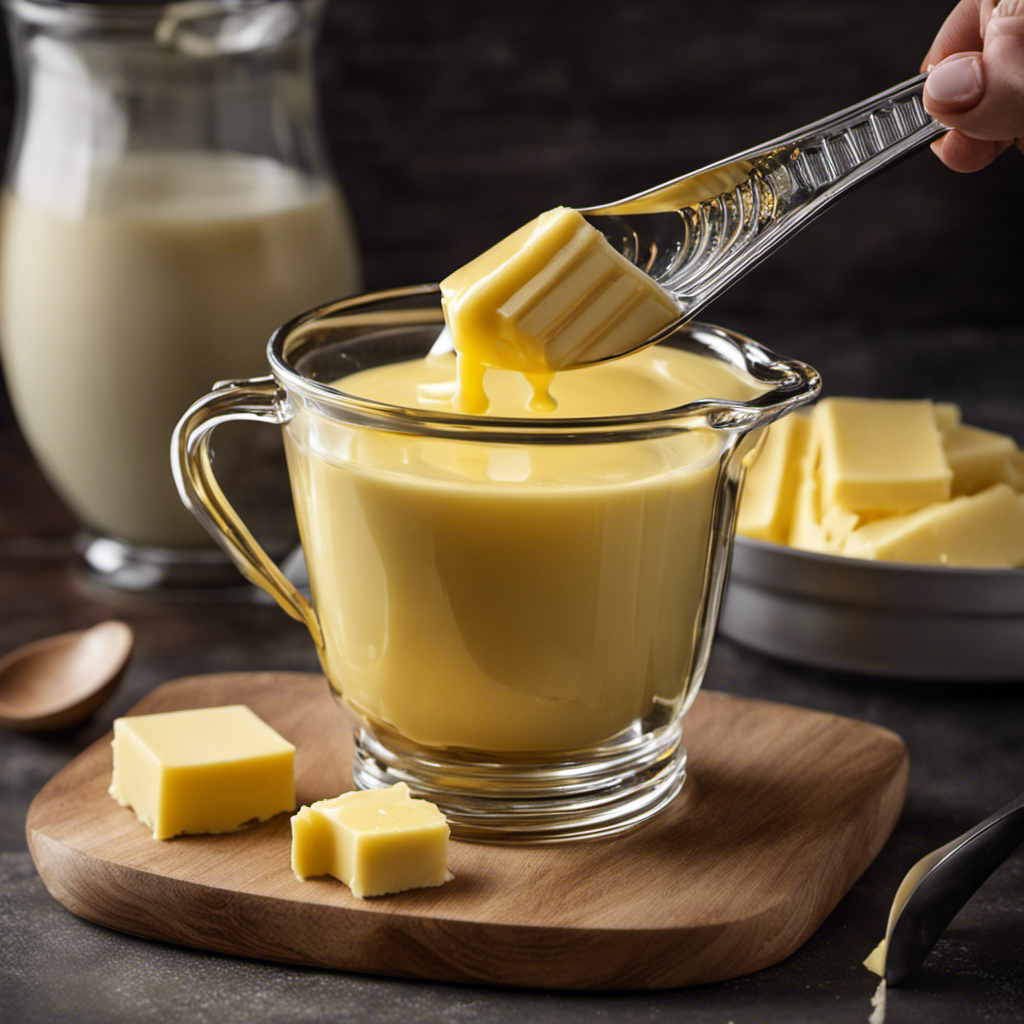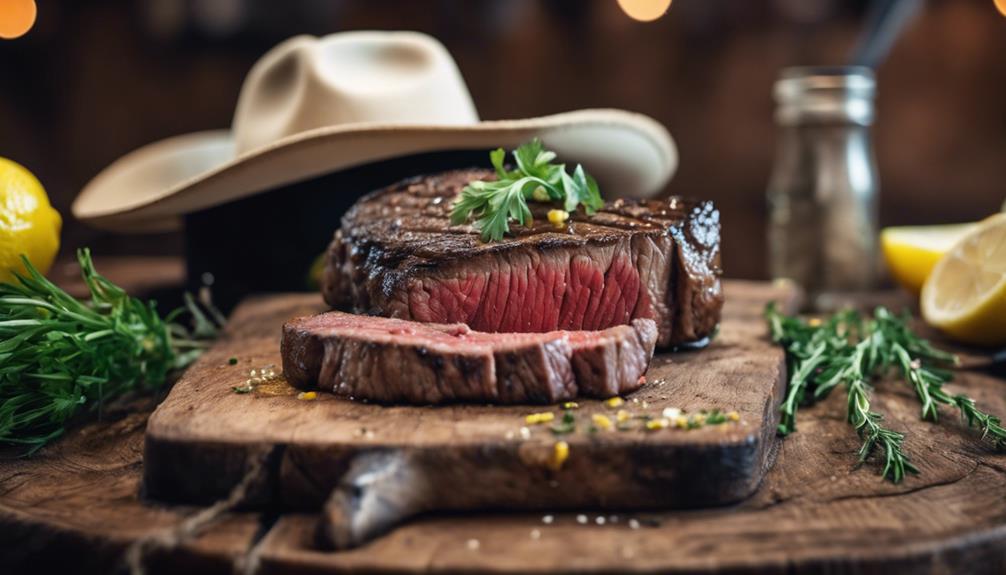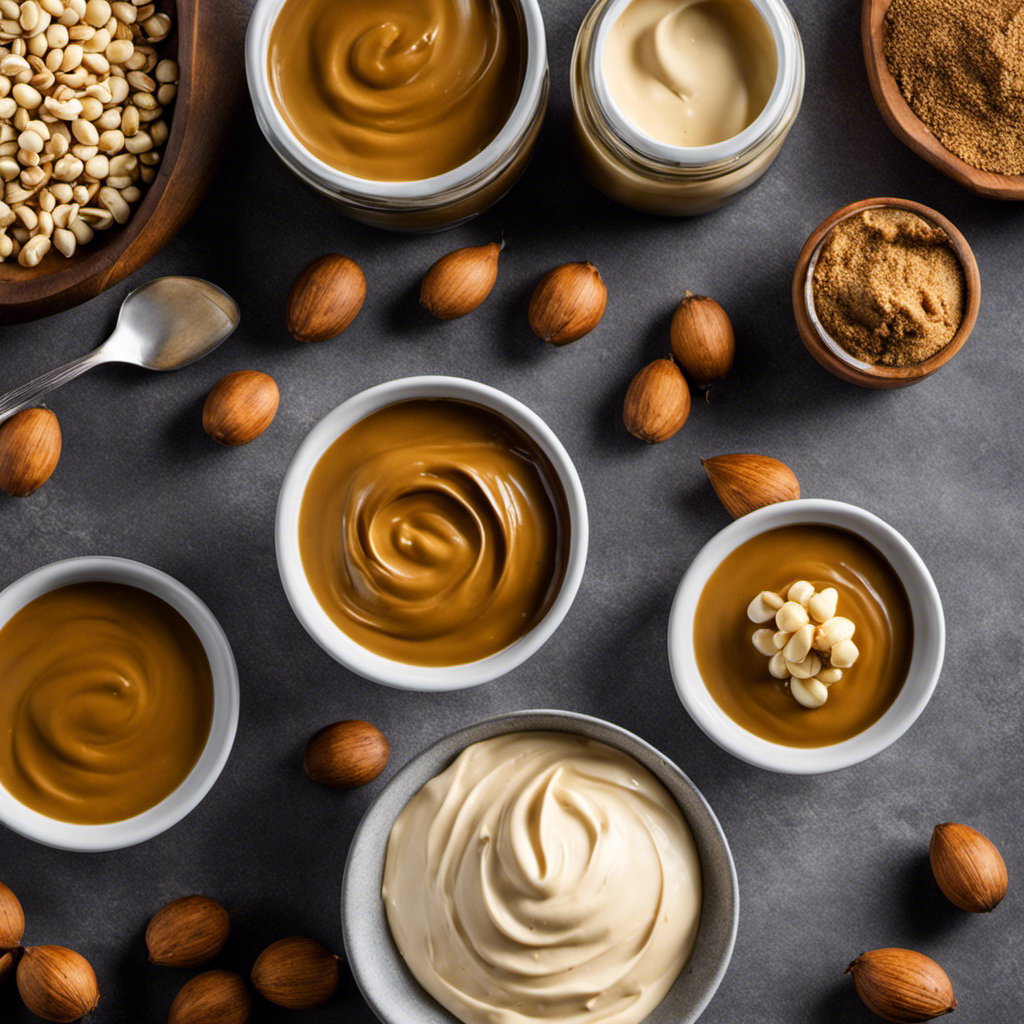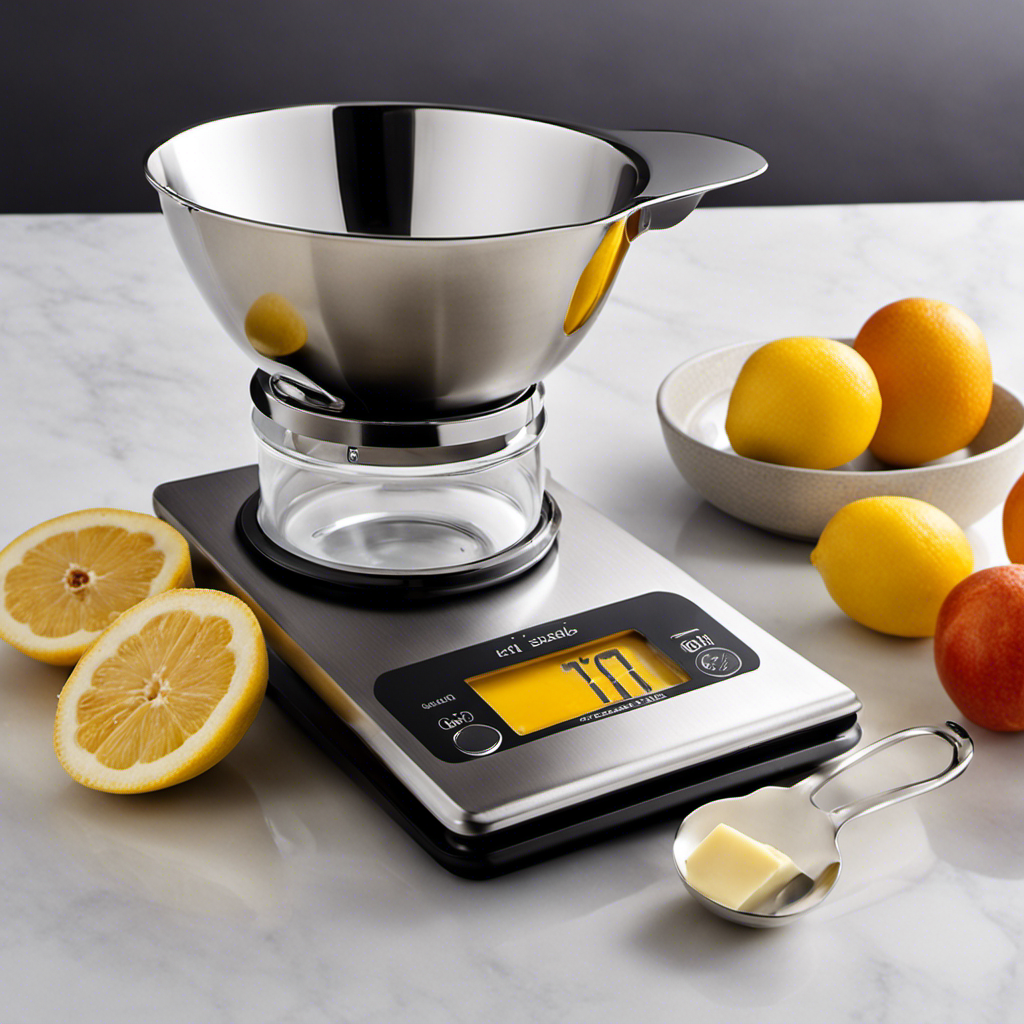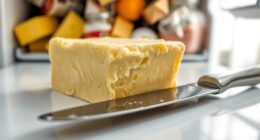Ever thought about the amount of salt present in unsalted butter? It might seem contradictory, but unsalted butter does have a slight amount of salt.
In this article, I will delve into the factors that affect the salt content in unsalted butter, explore the difference between salted and unsalted butter, and discuss the importance of salt in butter making.
Additionally, I will provide tips on choosing the right unsalted butter and reducing salt in recipes.
Get ready to uncover the truth about unsalted butter and its hidden salt.
Key Takeaways
- Unsalted butter contains approximately 1-2% salt of the total weight.
- Checking the nutritional information on the packaging can help individuals with specific dietary restrictions or concerns about sodium intake.
- Unsalted butter still has a rich and creamy taste that can enhance the flavor of dishes, despite not containing added salt.
- Choosing unsalted butter allows individuals to have more control over their sodium intake and reduce the risk of health problems.
Understanding the Salt Content in Unsalted Butter
You might be wondering how much salt is actually in unsalted butter. Despite its name, unsalted butter does contain a small amount of salt. The salt content is usually around 1-2% of the total weight.
This means that for every 100 grams of unsalted butter, you can expect to find approximately 1-2 grams of salt. While this may seem insignificant, it is important to consider the health implications, especially for individuals who need to closely monitor their sodium intake.
The recommended daily salt intake for adults is around 2,300 milligrams, which is roughly equal to 1 teaspoon of salt. Therefore, even the small amount of salt in unsalted butter can contribute to your daily sodium intake.
It is crucial to be aware of the salt content in all the foods we consume, including seemingly ‘unsalted’ products like butter.
Factors Affecting the Salt Levels in Unsalted Butter
When it comes to preserving salt, there are several techniques that are commonly used. These techniques include brining, dry salting, and smoking.
In terms of butter manufacturing processes, there are various steps involved such as churning, washing, and packaging.
Understanding these techniques and processes can provide valuable insights into the preservation and production of salted butter.
Salt Preservation Techniques
To preserve unsalted butter, it’s common to use salt preservation techniques. Salt acts as a natural preservative by inhibiting the growth of bacteria and molds that can spoil the butter.
However, for individuals looking to reduce their salt intake or those with health concerns, salt alternatives can be used. These alternatives include herbs, spices, and citrus zest, which add flavor without the need for excessive sodium.
Excessive salt intake has been linked to various health implications, such as high blood pressure and an increased risk of cardiovascular diseases. Therefore, it is important to be mindful of our salt consumption and explore healthier options when preserving unsalted butter.
Butter Manufacturing Processes
In butter manufacturing processes, cream is churned until it reaches the desired consistency. This process involves separating the fat from the milk solids, resulting in butter.
Here are some key points to understand about butter manufacturing:
- Cream is first pasteurized to kill any harmful bacteria.
- The cream is then cooled to a specific temperature to allow the fat to separate from the milk solids.
- Churning the cream causes the fat globules to collide and stick together, forming butter.
- The butter is then washed to remove any remaining milk solids and improve its shelf life.
Butter alternatives have gained popularity due to various reasons, including dietary preferences and health concerns. However, unsalted butter still offers its own unique health benefits, such as being a good source of healthy fats and fat-soluble vitamins.
Now let’s dive deeper into the comparison between salted and unsalted butter: what’s the difference?
Comparing Salted and Unsalted Butter: What’s the Difference
The main difference between salted and unsalted butter is the amount of salt present. Salted butter contains added salt, while unsalted butter does not. This difference in salt content affects both the flavor and the healthiness of the butter.
Salted butter is known for its savory taste due to the added salt. This salt enhances the butter’s flavor, making it more suitable for savory dishes like sautéed vegetables or grilled meats. On the other hand, unsalted butter has a more neutral taste, allowing its natural buttery flavor to shine through. This makes it a better choice for baking and desserts where a milder flavor is desired.
When it comes to health, unsalted butter is generally considered healthier because it allows you to control your sodium intake. Excessive salt consumption can contribute to high blood pressure, heart disease, and other health issues. By choosing unsalted butter, you have more control over the amount of salt you consume, making it a healthier option.
The Importance of Salt in Butter Making
When it comes to understanding salt’s role in butter making, it’s important to consider the health implications as well. Salt plays a crucial role in butter production, not only enhancing flavor but also aiding in preservation and texture.
Here are some key points to consider:
- Salt acts as a natural preservative, inhibiting the growth of harmful bacteria in butter.
- It helps to enhance the flavor of butter by balancing out its richness.
- Salt also contributes to the texture of butter, giving it a smoother and creamier consistency.
- However, it’s worth noting that excessive salt consumption can have negative health effects, such as high blood pressure.
Transitioning into the subsequent section on choosing the right unsalted butter, let’s explore how to make an informed decision based on your needs and preferences.
How to Choose the Right Unsalted Butter for Your Needs
To make an informed decision based on your needs and preferences, consider checking the ingredients label for any added seasoning.
When it comes to choosing unsalted butter, there are several factors to consider. First, look for a reputable brand that uses high-quality cream. This ensures a rich and creamy taste. Additionally, check for the fat content. Higher fat content usually means a better flavor and texture. Lastly, consider whether you prefer a cultured or sweet cream butter. Cultured butter has a tangy flavor, while sweet cream butter is milder.
Using unsalted butter offers several benefits. It allows you to control the salt content in your dishes, making it ideal for those on a low-sodium diet or for recipes that require precise seasoning. It also allows the true flavor of other ingredients to shine through.
Now, let’s debunk the myth: is unsalted butter really salt-free?
Debunking Myths: Is Unsalted Butter Really Salt-Free
When it comes to unsalted butter, many people assume that it is completely free of salt. However, this is a common misconception.
Unsalted butter actually contains a small amount of salt, although it is significantly lower than salted butter.
In this discussion, we will explore the salt content in unsalted butter and debunk some of the misconceptions surrounding it.
Salt Content in Unsalted Butter
You might be surprised to learn that unsalted butter actually contains a small amount of salt. While it may seem contradictory, this is because the term ‘unsalted’ refers to the fact that no additional salt has been added during the butter-making process. However, there is still a natural amount of salt present in the cream used to make butter.
To help you understand the salt content in unsalted butter, here are some key points:
- Unsalted butter typically contains less than 1% salt content.
- The salt in unsalted butter is naturally occurring and not added during processing.
- The small amount of salt in unsalted butter is generally not enough to significantly impact the overall taste or health benefits of the product.
- If you have specific dietary restrictions or concerns about sodium intake, it is always a good idea to check the nutritional information on the packaging.
Understanding the salt content in unsalted butter is important to make informed choices when it comes to your diet. Now, let’s explore some common misconceptions about unsalted butter.
Misconceptions About Unsalted Butter
Common misconceptions about unsalted butter include the belief that it lacks flavor and that it is not as healthy as salted butter. However, these beliefs are not entirely accurate.
While it is true that unsalted butter does not contain added salt, it still has a rich and creamy taste that can enhance the flavor of dishes.
As for its health benefits, unsalted butter can be a healthier option for those who are watching their sodium intake. Excessive sodium consumption has been linked to various health issues, including high blood pressure.
By choosing unsalted butter, individuals can have more control over their sodium intake and reduce their risk of these health problems.
It is important to note that moderation is key, and it is always advisable to consult with a healthcare professional for personalized dietary advice.
Tips for Reducing Salt in Recipes When Using Unsalted Butter
To reduce salt in recipes, it’s helpful to use unsalted butter. Here are some tips for reducing sodium intake when using unsalted butter:
-
Experiment with alternative butter options such as ghee or coconut oil, which have lower sodium content.
-
Use herbs and spices to enhance the flavor of your dishes instead of relying on salt.
-
Choose low-sodium broths or stocks when making soups or sauces.
-
Be mindful of other ingredients in your recipe that may contain sodium, such as canned tomatoes or soy sauce.
Frequently Asked Questions
Can Unsalted Butter Still Contain Trace Amounts of Salt?
Yes, unsalted butter can still contain trace amounts of salt. However, it is typically much lower in salt content compared to salted butter. Unsalted butter is commonly used for baking and has a longer shelf life.
Is Unsalted Butter Healthier Than Salted Butter?
In terms of flavor, salted butter is more flavorful than unsalted butter. However, when it comes to baking, unsalted butter is often preferred as it allows for better control over the salt content in the recipe.
Can I Substitute Unsalted Butter for Salted Butter in a Recipe?
When substituting butter in a recipe, it’s important to consider the salt content. Unsalted butter contains no added salt, so if you’re using it instead of salted butter, you may need to adjust the recipe’s seasoning accordingly.
Does Unsalted Butter Taste Different Than Salted Butter?
Does unsalted butter taste different than salted butter? Yes, it does. Unsalted butter has a more neutral flavor, allowing the natural taste of ingredients to shine through. It is great for cooking, as it gives you more control over the saltiness of your dishes.
How Can I Determine the Salt Content in a Particular Brand of Unsalted Butter?
To determine the salt content in a specific brand of unsalted butter, I would compare the nutrition labels of different brands. Look for the sodium content per serving, as that indicates the amount of salt present.
Conclusion
In conclusion, understanding the salt content in unsalted butter is essential for making informed choices in the kitchen.
Factors like the butter-making process and the quality of the cream used can affect the salt levels in unsalted butter.
While unsalted butter may not be completely salt-free, it provides a blank canvas for adding salt according to personal taste.
By debunking the myth that unsalted butter is completely devoid of salt, we can confidently choose the right unsalted butter for our needs and create delicious dishes with reduced salt content.
